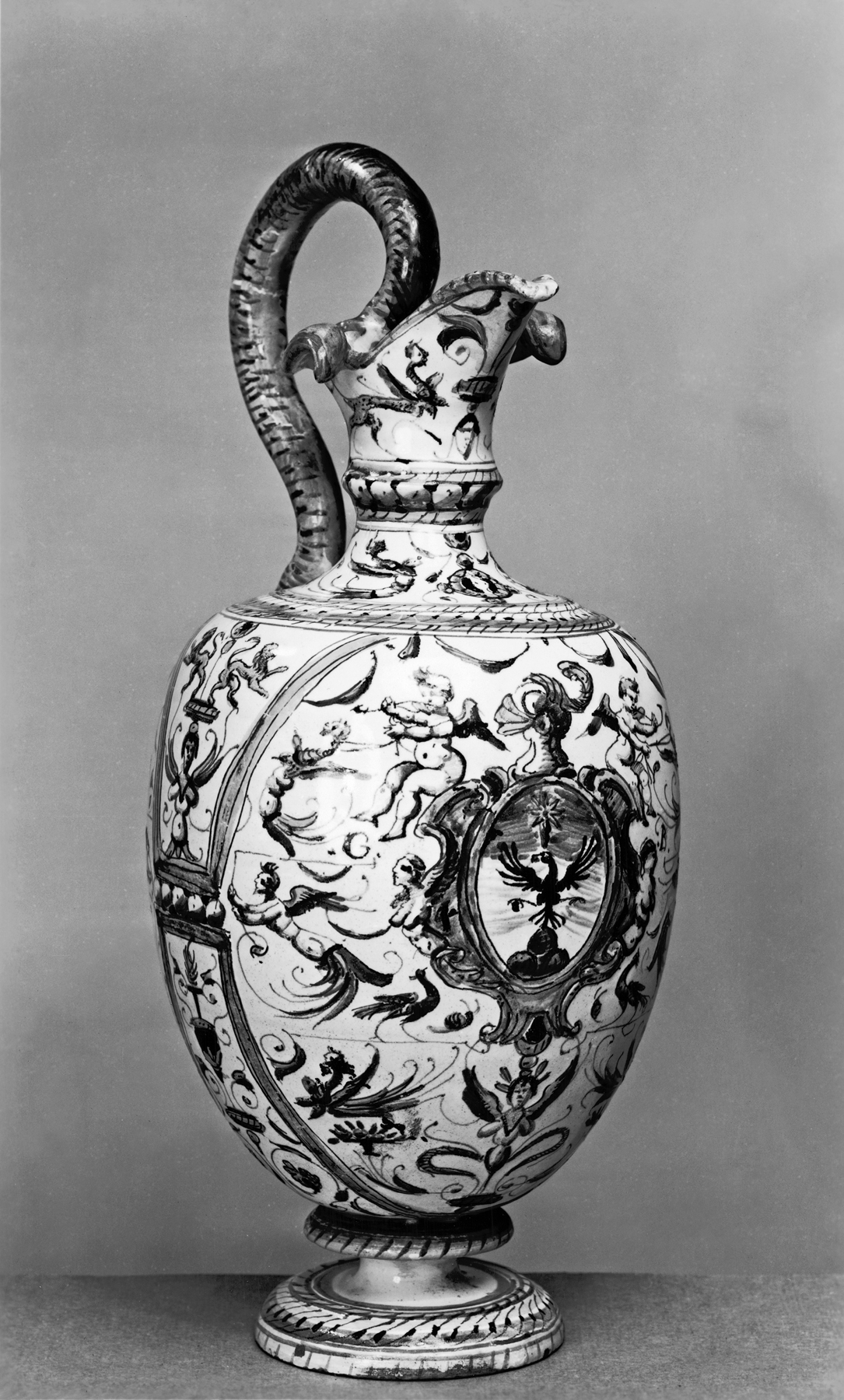Ewer with Eagle on a Shield with the Arms of the Del Monte (?) Family
(Renaissance Europe )
During the Renaissance, as much of the food continued to be picked up with the hands, elaborate ewers were used for hand rinsing in between banquet courses, and would have been paired with a matching basin. This ewer is decorated with birds, snails, small medallions, spotted sphinxes, and winged infants painted in the “grotesque” style, in blue, olive-green, yellow, ochre, and dark manganese colors against a white background. Grotesques emerged as popular design elements for maiolica during the sixteenth century, and were heavily influenced by the wall paintings from Roman "grottos", ie. excavated ancient Roman palaces. The body of the ewer is divided into compartments by yellow striped bands. On the front, a cartouche surmounted by a plumed helmet and flanked by harpies and the initials “G” and “B”, displays a baroque coat of arms with an eagle and star above three mounts. Three mounts was used by the Del monte family and the Ciocchi del Monte family, for which see 48.1359, but the specific patron associated with this heraldic device has not been identified. The interior of the ewer’s mouth is striped with blue. This ewer is thought to have been produced in one of Urbino’s maiolica workshops, as the grotesque style became especially prominent in the city during the Renaissance period. However it may have also come from a workshop in Pisa, where very similar wares were made at the end of the sixteenth century. To see other maiolica pieces with grotesque designs, see 48.1369, 48.1370, and 48.1510; for more on “maiolica,” see 48.1336.
Inscription
Provenance
Provenance (from the French provenir, 'to come from/forth') is the chronology of the ownership, custody, or location of a historical object. Learn more about provenance at the Walters.
Henry Walters, Baltimore [date and mode of acquisition unknown]; Walters Art Museum, 1931, by bequest.
Geographies
Italy, Rome (Place of Origin)
Measurements
12 1/8 x 5 9/16 in. (30.8 x 14.1 cm)
Credit Line
Acquired by Henry Walters
Location in Museum
Accession Number
In libraries, galleries, museums, and archives, an accession number is a unique identifier assigned to each object in the collection.
In libraries, galleries, museums, and archives, an accession number is a unique identifier assigned to each object in the collection.
48.1489


